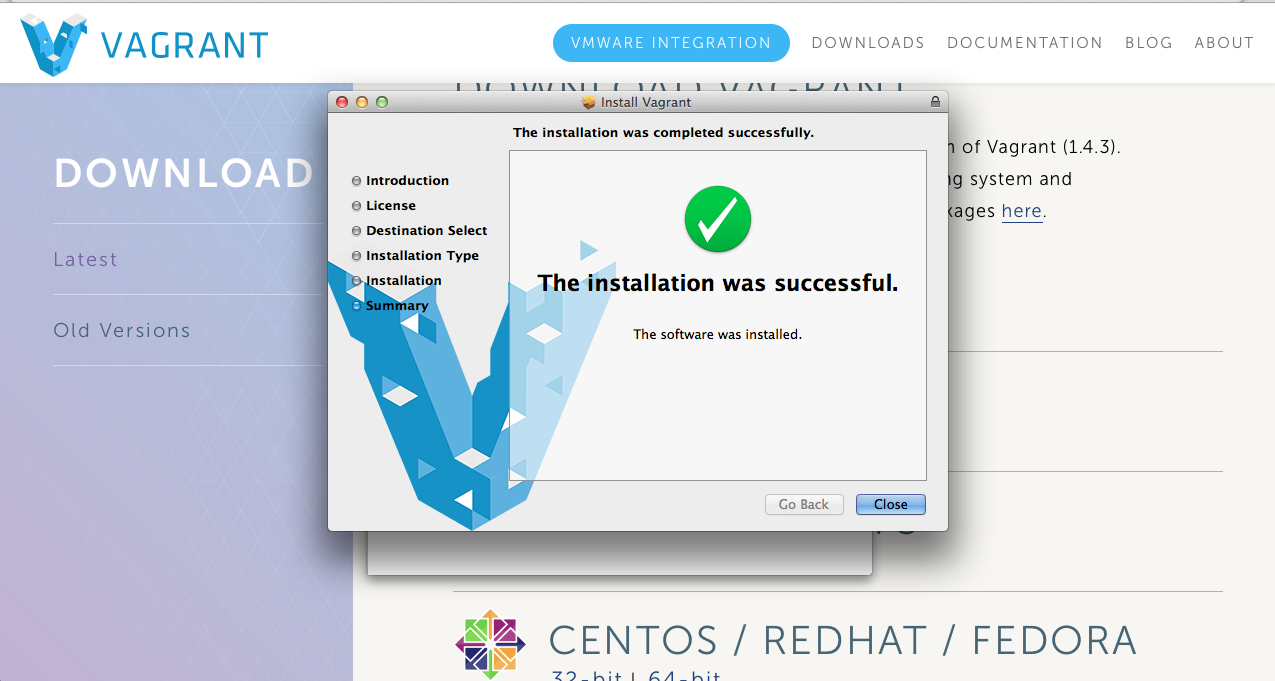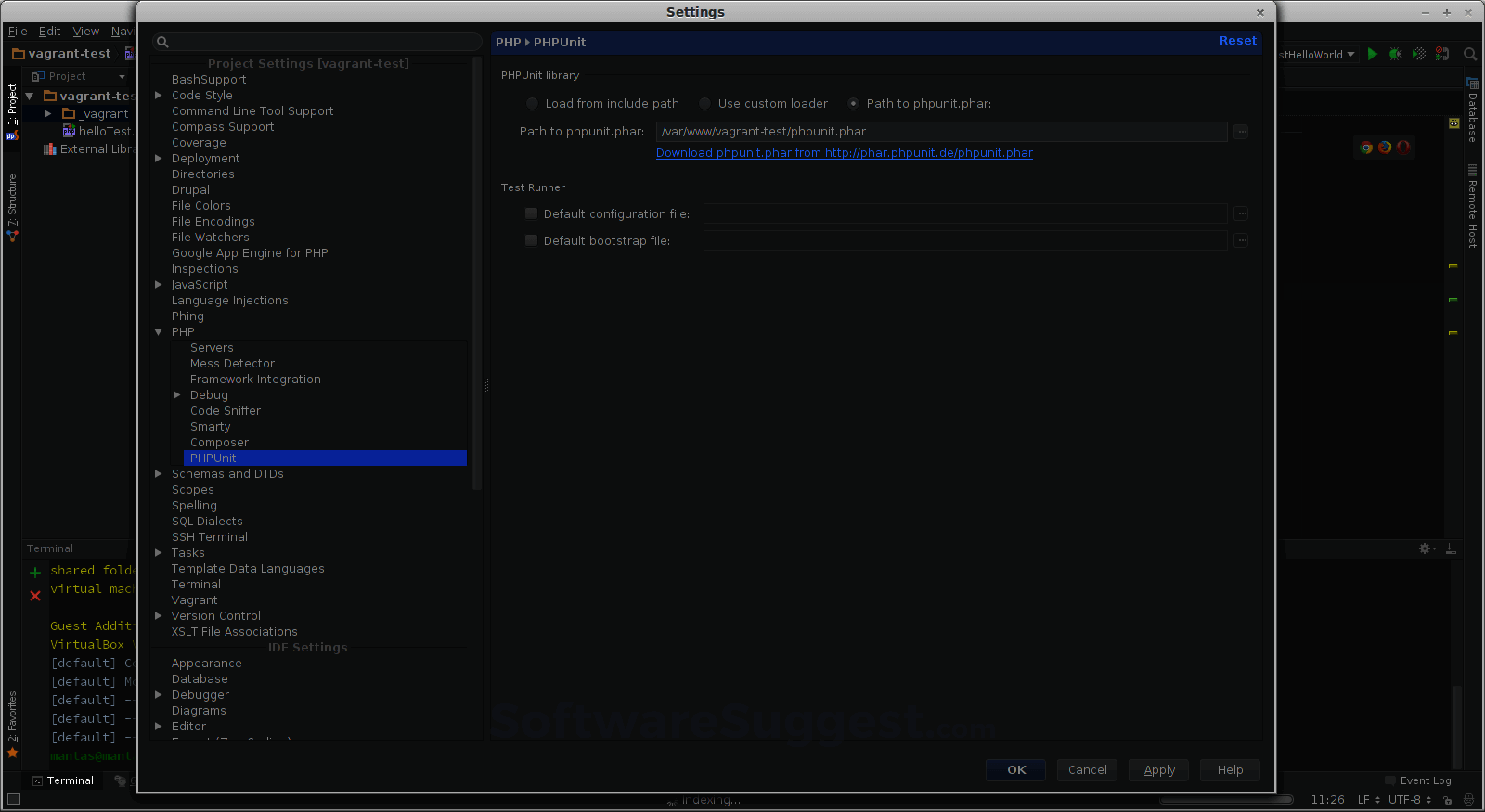
From this codebase RedHat builds and maintains a commercial product, Ansible Tower.
#VAGRANT FOR MAC CODE#
This code is available to review and use for free. RedHat maintains an open-source platform for running Ansible jobs called AWX. VBoxManage: error: Context: “CreateMachine(bstrSettingsFile.raw(), bstrName.raw(), ComSafeArrayAsInParam(groups), bstrOsTypeId.raw(), createFlags.raw(), machine.asOutParam())” at line 275 of file VBoxManageMisc.First, let’s talk about what AWX is and how Vagrant can help us effortlessly build this instance. VBoxManage: error: Details: code VBOX_E_OBJECT_NOT_FOUND (0x80bb0001), component VirtualBox, interface IVirtualBox, callee nsISupports => virtualbox-iso: Deleting output directory…īuild ‘virtualbox-iso’ errored: Error creating VM: VBoxManage error: VBoxManage: error: Guest OS type ‘MacOS1012_64’ is invalid => virtualbox-iso: VBoxManage: error: Context: “CreateMachine(bstrSettingsFile.raw(), bstrName.raw(), ComSafeArrayAsInParam(groups), bstrOsTypeId.raw(), createFlags.raw(), machine.asOutParam())” at line 275 of file VBoxManageMisc.cpp => virtualbox-iso: VBoxManage: error: Details: code VBOX_E_OBJECT_NOT_FOUND (0x80bb0001), component VirtualBox, interface IVirtualBox, callee nsISupports => virtualbox-iso: Error creating VM: VBoxManage error: VBoxManage: error: Guest OS type ‘MacOS1012_64’ is invalid You’re almost ready to vagrant up, but one final caveat applies for VirtualBox users-there are no guest additions for OS X, so if you want to sync files, you’ll need to set up a shared folder in the VagrantFile to use rsync: config.vm.provider "virtualbox" do |vb|Ĭonfig.vm.synced_folder ".", "/vagrant", type: "rsync"Īnd you’re done! vagrant up, vagrant ssh (or use some other remote access tool, like Screen Sharing), and away you go! Once the box is in, you can head over to your project directory and run vagrant init osx-10.11.1 (or whatever you named your box) to set up the initial Vagrantfile.

Adding that box to Vagrant is straightforward: $ vagrant box add \ This process is quite time-consuming, but you can watch progress in the virtual machine console that pops up and on the command-line. I actually have VMware Fusion on my machine, but not the Vagrant provider for it, so I don’t want Packer to build a box for VMware.

Thankfully, disabling it is a piece of cake: $ sudo prepare_iso/prepare_iso.sh \ If you leave it enabled, the resulting virtual machine will periodically freeze. Note that as of this writing, you need to do one additional thing if you’re a VirtualBox user: stop prepare_iso from enabling the Remote Management service, which is used with Apple Remote Desktop. Applications/Install\ OS\ X\ El\ Capitan.app/ \ app and an output directory, and it’ll give you an installer disk image ready for Packer: $ sudo prepare_iso/prepare_iso.sh \ This is accomplished using the prepare_iso tool from osx-vm-templates.
#VAGRANT FOR MAC MAC#
app your downloaded from the Mac App Store. The first thing you’ll need to do is prepare an installer disk image from the. The rest of what you need (apart from Vagrant and your virtualization solution) is either in the osx-vm-templates repo or already on your Mac. app from the Mac App Store for the version of OS X you want to Vagrantize. You’ll also need Packer to build the boxes, and an installer. VirtualBox is serviceable, but not a great performer.

free) and brewdo is my only need for virtualized OS X. I personally use Vagrant’s built-in VirtualBox support, because it’s much cheaper (i.e. Tim recommends using VMware Fusion with the VMware Fusion provider. I use (and have contributed VirtualBox support to) Tim Sutton‘s excellent osx-vm-templates project to build Vagrant boxes for OS X. OS X on Vagrant is achievable, and without skirting Apple’s copyright. And although Apple gives permission to virtualize it, they don’t give permission to share copies of it.īut all is not lost. If brewdo targeted Linux, I could very easily use Vagrant to spin up a Linux system and develop it there. Because I need my MacBook to keep working day-to-day, I need a way to develop features and fixes in brewdo without risking my system’s integrity. I maintain an OS X tool for sandboxing the popular Homebrew package manager called brewdo.


 0 kommentar(er)
0 kommentar(er)
